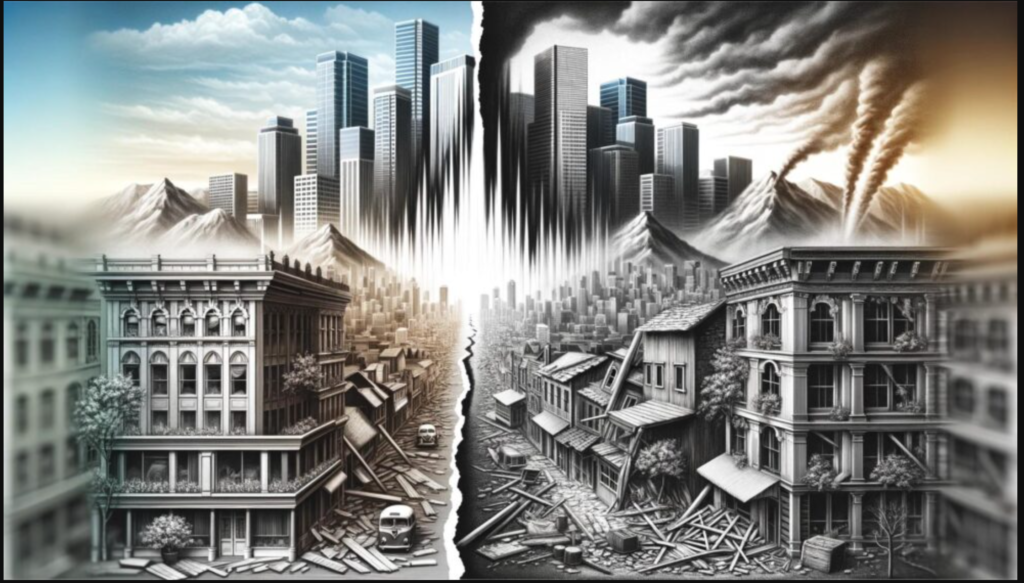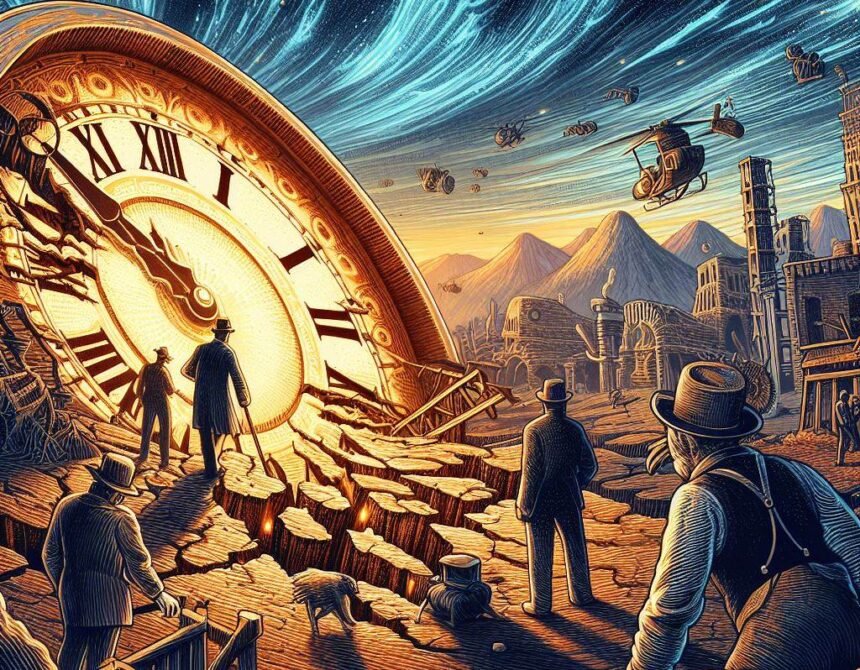Introduction
The Earth’s crust is a dynamic and ever-changing landscape. It’s shaped by forces that are constantly at work, causing the ground beneath our feet to shift and move. One of the most dramatic manifestations of these forces is an earthquake. But what if some of the earthquakes we experience today are actually aftershocks from quakes that occurred over a century ago? This concept, known as “time-traveling tremors,” is a fascinating area of study in the field of seismology.
Understanding Earthquakes and Aftershocks
To understand time-traveling tremors, we first need to understand earthquakes and their aftershocks. An earthquake occurs when there’s a sudden release of energy in the Earth’s crust, creating seismic waves that shake the ground. This usually happens due to the movement of tectonic plates – the large sections of the Earth’s crust that float on top of the semi-fluid mantle layer.
An aftershock is a smaller earthquake that occurs after the main shock. It happens in the same area of the main shock due to the crust adjusting to the effects of the main earthquake. Aftershocks can continue over a period of weeks, months, or even years depending on the scale of the main shock.
The Concept of Time-Traveling Tremors
Also read : Celestial Spectacle: Meteor Showers Illuminate The Skies Of West Michigan

Recent research indicates that parts of the central and eastern United States may still be experiencing aftershocks from significant 19th-century earthquakes. The study analyzed seismic data from three historic quakes, concluding that some modern seismic activity in these areas could be long-lived aftershocks, mixed with background seismicity.
The concept of time-traveling tremors suggests that some of the earthquakes we experience today could actually be aftershocks from major earthquakes that occurred in the 1800s or even earlier. This is a significant shift from the traditional understanding that aftershocks typically occur shortly after the main shock.
The idea is based on the observation that in some regions, seismic activity seems to be clustered around the sites of major historical earthquakes. For example, in the New Madrid Seismic Zone in the central United States, there’s ongoing seismic activity that may be linked to major earthquakes that occurred in the 1800s.
Implications and Future Research

In 1886, a devastating magnitude 6.7-7.3 earthquake shook Charleston, South Carolina. Earthquakes from centuries ago, including this event, may still send aftershocks through parts of the United States, according to a new study in AGU’s journal JGR Solid Earth. Credit: Henry de Saussure Copeland
The concept of time-traveling tremors has significant implications for our understanding of seismic hazards and risks. If true, it means that the effects of major earthquakes can linger for much longer than previously thought, potentially increasing the risk of future quakes.
However, much more research is needed to fully understand and confirm this phenomenon. Seismologists need to gather more data on earthquakes and aftershocks, and develop more sophisticated models to simulate the behavior of the Earth’s crust over long periods of time.

Conclusion
The study of time-traveling tremors is a reminder of the complex and dynamic nature of our planet. It underscores the need for ongoing research and monitoring to better understand and predict earthquakes, ultimately helping to protect people and communities from these natural disasters. As we continue to delve into the mysteries of the Earth’s crust, who knows what other surprising discoveries await?
Frequently Asked Questions (FAQ) – Time-Traveling Tremors: Aftershocks from the 1800s
- What are aftershocks in the context of earthquakes?Aftershocks are smaller seismic events that follow a larger earthquake. They occur in the same general area as the mainshock and are a result of the adjustment of the Earth’s crust to the stress changes induced by the initial earthquake.
- How can earthquakes from the 1800s trigger aftershocks today?The Earth’s crust is constantly under strain due to tectonic activity. Major earthquakes release stress along fault lines, and this stress can persist for centuries. Some contemporary seismic events may be aftershocks triggered by the stress release from earthquakes that occurred in the 1800s.
- What regions are being studied in relation to time-traveling tremors?Researchers are exploring seismic activity in various regions, including California and Japan, which are known for their high seismicity. By examining historical records and seismic archives, scientists aim to understand the potential link between past earthquakes and present-day aftershocks.
- How are scientists identifying historical earthquakes that may be linked to current aftershocks?Scientists rely on a combination of geological and seismological data, historical records, and accounts of past earthquakes to identify significant events. By reconstructing the seismic history of a region, researchers can discern patterns and potential links between historical earthquakes and modern aftershocks.
- What are the implications of the concept of time-traveling tremors for seismic hazard assessment?Understanding the potential link between historical earthquakes and present-day aftershocks has significant implications for seismic hazard assessment. It could influence our perception of regional seismic risk and contribute to more accurate earthquake preparedness and mitigation strategies.
- Are there challenges associated with identifying time-linked tremors?Yes, there are challenges. Distinguishing between independent seismic events and aftershocks separated by centuries requires meticulous analysis. This multidisciplinary approach involves geology, seismology, and historical research to confirm the temporal connections between earthquakes.
- What does the concept of time-traveling tremors reveal about Earth’s seismic history?The concept reveals the dynamic and interconnected nature of Earth’s seismic history. By unraveling the threads of seismic events from the past, scientists gain insights into the long-term effects of earthquakes and the enduring impact of stress release on the Earth’s crust.
- How does the study of time-traveling tremors contribute to our understanding of Earth’s seismicity?The study contributes to a deeper understanding of Earth’s seismicity by exploring the persistence of stress release from historical earthquakes. It underscores the intricate relationship between past and present seismic events, enriching our knowledge of the complex processes shaping the Earth’s dynamic crust.
Also read : Sweet Science: How Strawberries May Guard Against Dementia And Depression




































